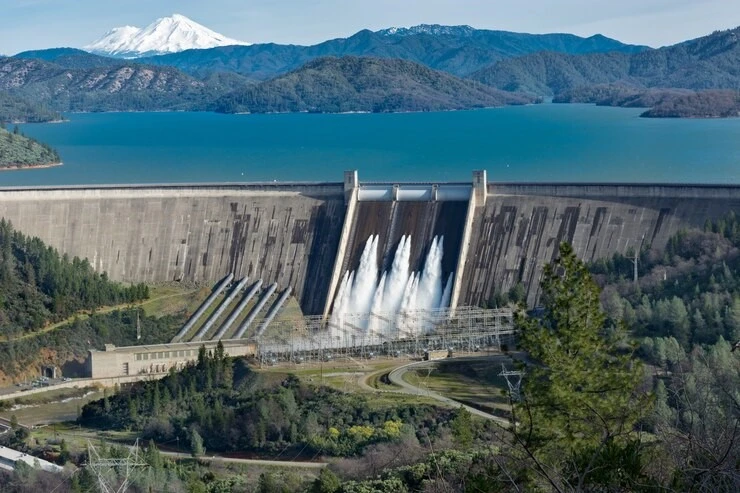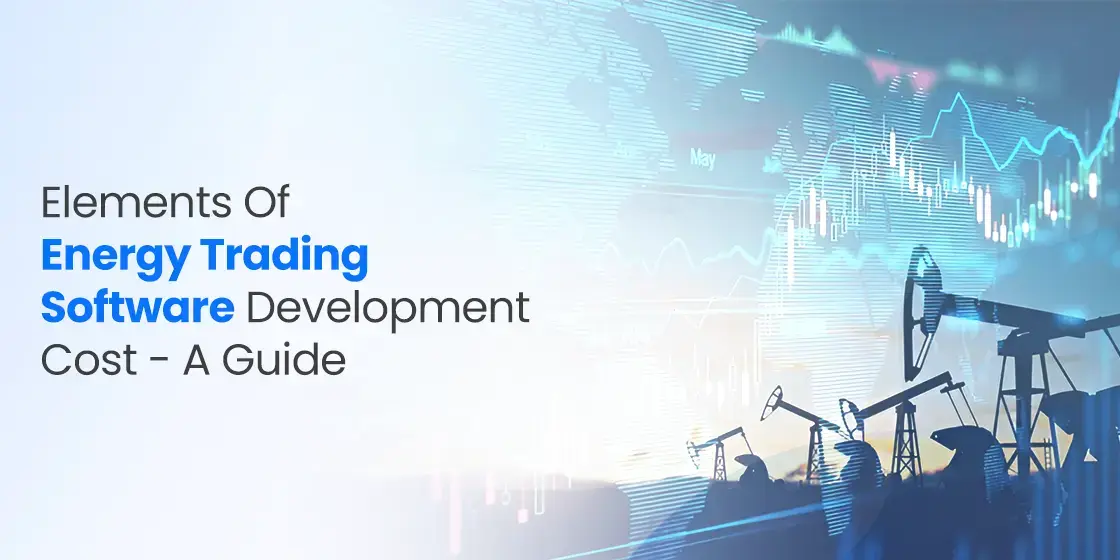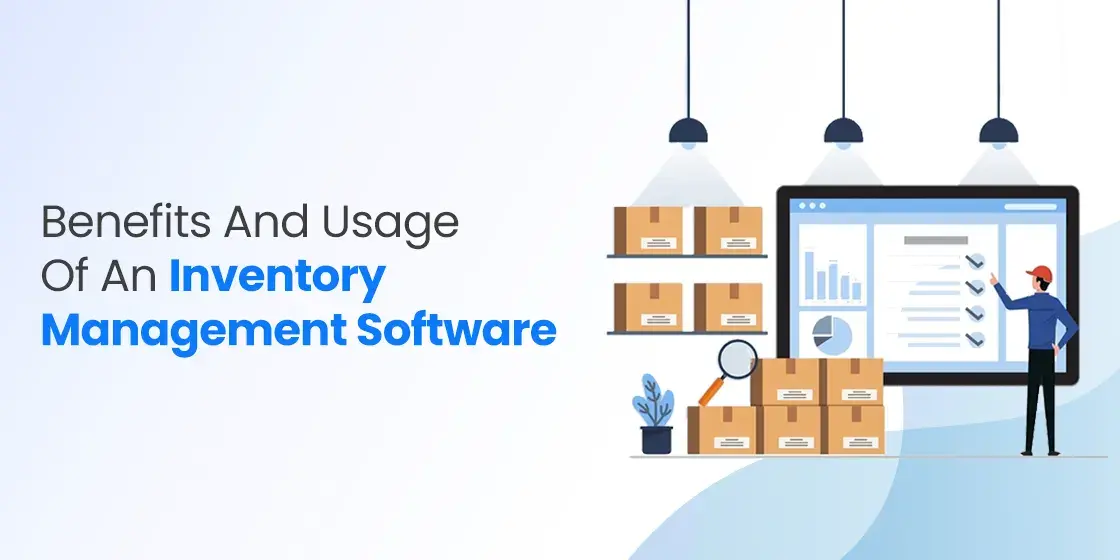Table of Content
Discover the Top Factors Affecting Energy Trading Software Development
The energy trading sector, a high-stakes and rapidly evolving domain, relies heavily on sophisticated software solutions to manage complex transactions, analyze vast datasets, and navigate volatile markets.
From facilitating real-time trading of electricity, natural gas, and crude oil to managing risk and ensuring regulatory compliance, specialized energy trading software is an indispensable tool for participants ranging from large utilities and commodity traders to financial institutions.
However, the development of such intricate and mission-critical software involves numerous factors that significantly influence the overall cost. Understanding these cost drivers is crucial for businesses looking to invest in or upgrade their energy trading capabilities, enabling them to budget effectively and make informed decisions about their technology investments.
In this guide, we will dive into the key elements that significantly impact the cost of developing energy trading software, from the perspective of an enterprise software development services. We will also provide a detailed breakdown of each factor to aid businesses in their planning and decision-making.
Let’s begin.
What is Energy Trading? A Brief Overview

Energy trading involves the buying and selling of energy commodities, such as crude oil, natural gas, electricity, coal, and renewable energy certificates, in various markets. These markets can be physical, where the actual commodities are exchanged, or financial, where contracts representing the future delivery of energy are traded.
Participants in energy trading include producers (e.g., oil and gas companies, power generators), consumers (e.g., utilities, industrial users), financial institutions (e.g., investment banks, hedge funds), and specialized trading firms. The primary goal of energy trading is to profit from price fluctuations, manage risk exposure, and ensure the reliable supply and demand of energy.
The dynamics of energy trading are influenced by a multitude of factors, including supply and demand fundamentals, geopolitical events, weather patterns, technological advancements, and government regulations. Prices can be highly volatile, creating both opportunities and risks for market participants.
Trading activities occur across various timeframes, from short-term day-ahead markets to long-term futures contracts. Sophisticated analytical tools and real-time market data are essential for making informed trading decisions. Traders utilize various strategies, including arbitrage, hedging, and speculation, to achieve their objectives.
The Importance of Energy Trading Software Development in the World Today

In today’s data-driven world, the development of sophisticated energy trading software is not merely a convenience but a critical necessity for participants in the energy markets. The sheer volume of data generated by energy markets, coupled with the speed and complexity of activities, makes manual processes and outdated systems inadequate.
Robust software solutions provide the tools and capabilities required to navigate this intricate landscape, offering a significant competitive advantage to those who leverage them effectively. Some of the primary reasons for the importance of energy trading software include:
- Facilitate real-time data analysis and decision-making. Traders need access to up-to-the-second market prices, news feeds, weather forecasts, and other relevant information to identify trading opportunities and execute transactions swiftly. This real-time capability is crucial in volatile energy markets where prices can fluctuate significantly in short periods.
- Managing risk and ensuring regulatory compliance. The energy markets are subject to numerous regulations and reporting requirements, and non-compliance can result in significant penalties. The development of tailored and comprehensive energy trading software is therefore paramount for operational efficiency, risk mitigation, and regulatory adherence in the modern energy sector.
What Elements Affect the Energy Trading Software Development Cost?

The energy trading software cost is influenced by a multitude of interconnected factors. Understanding these elements is crucial for accurate budgeting and effective project planning. Let’s take a look at them in a little detail.
Software Complexity and Size
The complexity and size of the energy trading software are primary drivers of development cost. A simple application with basic trading functionalities will naturally be less expensive to develop than a comprehensive platform with advanced features.
These functions can include algorithmic trading, sophisticated risk management tools, and intricate reporting capabilities. The number of modules, the depth of functionality within each module, and the overall scale of the application directly impact the development effort required in terms of design, coding, testing, and deployment.
Moreover, the number of user roles and the level of customization required for each role contribute to the overall complexity. A system designed for a small team of traders with standardized workflows will be less expensive than one that needs to accommodate various departments with distinct access levels, functionalities, and reporting needs.
The more intricate the user management and permission structures, the greater the development effort involved. Additionally, the anticipated number of concurrent users and the expected transaction volume will influence the scalability requirements and the underlying infrastructure needed, which can also impact the development cost.
Finally, the level of automation desired within the software will also affect the cost. Automating tasks such as trade execution, settlement, and regulatory reporting can improve efficiency and reduce manual errors but requires development effort to design, implement, and test these automated workflows.
Partner with our software development specialists to pioneer custom solutions that drive your business forward.
Request Your Solution
Technology Stack to Be Used
The technology stack chosen for developing the energy trading software significantly impacts the development cost. Different programming languages, frameworks, databases, and cloud platforms have varying levels of development speed, availability of skilled developers, licensing costs, and infrastructure requirements. Conversely, using more established technologies might have a larger pool of developers but could present limitations in terms of scalability or performance for complex trading applications.
The choice of frontend technologies will influence the complexity and speed of user interface development. Similarly, the most popular backend frameworks will impact the scalability, performance, and security of the application.
The selection of a database will depend on the data volume, query complexity, and real-time data processing requirements, each with its own cost implications. Furthermore, the decision to deploy the software on on-premises infrastructure or a cloud platform will have significant cost implications related to hardware, maintenance, scalability, and security.
Licensing costs associated with certain software components, development tools, and cloud services can also contribute to the overall development cost. Open-source technologies can reduce licensing fees but might require more effort in terms of customization and support. The long-term maintainability and scalability of the chosen technology stack are also important cost considerations.
Selecting technologies that are well-supported, have a large community, and offer clear upgrade paths can help to minimize future maintenance and scaling costs. Therefore, a careful evaluation of the technical requirements, performance needs, developer availability, licensing costs, and long-term implications of the technology stack is crucial for optimizing the development cost of energy trading software.
UI/UX Customization
The level of UI/UX (User Interface/User Experience) customization required for the energy trading software is another significant factor affecting development cost. A basic, off-the-shelf user interface will be less expensive to implement than a highly customized and intuitive interface tailored to the specific workflows and preferences of energy traders.
The complexity of the required data visualization tools, such as interactive charts, heat maps, and analytical dashboards, will directly impact the development cost. Implementing features that allow traders to monitor market data, track positions, and analyze risk in real-time often involves intricate front-end development and integration with back-end data feeds.
Furthermore, the level of user research, usability testing, and iterative design involved in creating a truly user-centric interface will also contribute to the overall cost. While investing in a well-designed UI/UX can significantly improve trader efficiency, reduce errors, and enhance user satisfaction, it requires a dedicated effort in the design and development phases.
Therefore, a careful balance needs to be struck between the desired level of customization and the budgetary constraints, focusing on the UI/UX elements that will provide the most significant value to the end-users and directly impact their trading performance.
Location of the Dev Team
The geographical location of the development team is a significant factor influencing the cost of energy trading software development. Development rates vary considerably across different regions due to factors such as the local cost of living, the supply and demand for software developers, and the overall economic conditions.
Hiring a development team in regions with a high cost of living and a competitive tech market, such as North America or Western Europe, will generally be more expensive than engaging a team in regions with lower labor costs, such as Eastern Europe, South Asia, or South America.
While offshore or nearshore software development can offer potential cost savings, it’s important to consider other factors such as communication barriers, time zone differences, cultural nuances, and potential challenges in managing remote teams. The quality of the development work and the level of expertise also need to be carefully evaluated, as lower costs do not always equate to the best value.
On the other hand, local development teams might offer better communication and easier collaboration but can come with higher labor costs. A thorough evaluation of the pros and cons of different development team locations, considering both cost and non-cost factors, is essential for making an informed decision that balances budgetary considerations with the need for quality and effective project execution.
Support and Maintenance
The ongoing support and maintenance of the energy trading software represent a significant portion of the total cost of ownership and should be considered during the initial development planning. This includes bug fixes, performance optimizations, security updates, regulatory compliance updates, and providing technical support to users.
Energy trading platforms are mission-critical applications where downtime or errors can have significant financial consequences. Therefore, robust support and maintenance plans are essential, which typically involve dedicated teams, offshore software testing, and well-defined service level agreements (SLAs).
Planning for ongoing maintenance and updates during the development phase can help to reduce long-term costs. Building a well-documented and modular codebase can simplify future maintenance and upgrades. Utilizing robust testing frameworks and implementing continuous integration and continuous deployment (CI/CD) pipelines can also streamline the process of deploying updates and bug fixes.
FAQs
| Is energy trading a good career? Depending on where you are located in the world, energy trading can be quite a lucrative career for you. |
| What is energy trading software? An energy trading software is designed to manage wholesale energy market transactions for companies that produce and sell energy to other entities. |
| What is an example of energy trading? Energy trading can include the likes of oil, wind energy, electricity, natural gas, and even carbon emissions. |
Conclusion
The energy trading software development cost is a multifaceted equation influenced by a wide array of interconnected elements. By carefully analyzing each of these elements, businesses in the energy trading sector can gain a comprehensive understanding of the financial implications involved in developing or upgrading their software infrastructure.
This detailed guide serves as a framework for informed decision-making, enabling organizations to prioritize features, optimize development strategies, and ultimately invest in robust and cost-effective energy trading solutions that meet their specific needs and empower them to thrive in the dynamic and demanding energy markets.

Empower your digital journey with StruqtIO - Your dedicated partner for cutting-edge custom software development, innovation, and digital transformative solutions. Harness the power of technology to elevate your business and redefine your digital landscape today.


